For the opportunity Nikon DX AF-S NIKKOR 55-300mm 1 Lens: 4.5-5.6G ED VR SWM HRI many thanks to Alexander, as well as many thanks to the store www.fotika.com.ua (where in 2018 I took the lens again to make sure some of its nuances).
In short
Nikon 55-300mm F / 4.5-5.6 VR - Telephoto Lens with Image Stabilizer for Nikon DX cameras. First of all, the Nikon 55-300mm F / 4.5-5.6 VR is interesting for 5.5x zoom and the ability to use 300mm focal length. Considering crop factor Nikon DX cameras for which this lens was designed, its EGF will be as much as 450 mm. This lens makes it easy to 'reach' distant objects. With Nikon 55-300mm F/4.5-5.6 VR you can shoot people from afar, wildlife, use as a portrait lens. Nikon 55-300mm F / 4.5-5.6 VR has a small aperture F / 4.5-5.6, but avoid grease when handheld photography stabilization system helps Nikon VR second generation. I achieved what I could take off without grease, using 300 mm focal length and shutter speed of the order of 1/80 second. I was satisfied with the work of VR.
Unfortunately, the focusing speed of the Nikon 55-300mm F / 4.5-5.6 VR is at a very low level, and the lens also has a very inconvenient manual focus.
Main technical characteristics of Nikon DX AF-S NIKKOR 55-300mm 1: 4.5-5.6G ED VR SWM HRI:
| Review Instance Name | Nikon DX AF-S NIKKOR 55-300mm 1: 4.5-5.6G ED VR SWM HRI 3172853 |
| Basic properties |
|
| Front Filter Diameter | 58 mm, plastic thread for filters |
| Focal length | 55-300 mm EGF for Nikon DX cameras is 82.5-450 mm |
| Zoom ratio | 5.45 x |
| Designed by | for digital cameras Nikon DX |
| Number of aperture blades | 9 rounded petals |
| Tags | focal lengths for 55, 70, 85, 105, 135, 200, 300 mm, bayonet mount mark and hood mounts |
| Diaphragm |
The lens is deprived of the aperture control ring, control is via the camera menu (G - lens type) |
| MDF (Minimum Focus Distance) | 1.4 m over the entire range of focal lengths, maximum magnification ratio 1: 3.6 |
| Stabilizer features | Up to 3 steps excerpts 300 mm focal length by CIPE standards (indicated on the official website), up to 4 steps by Nikon standards (indicated in the instructions) |
| The weight | 530 g |
| Optical design | 17 elements in 11 groups, including 2 low dispersion element (shown in yellow on the optical diagram). The presence of such elements is indicated on the body by the abbreviation 'ED'. As well as one HRI element (high refractive index), an element with a high refractive index (location on the optical scheme is not indicated)
Image of optical circuit clickable |
| Lens hood | Nikon HB-57, bayonet type, plastic, comes standard. |
| Transportation | With a soft cover CL-1020 |
| Manufacturer country | China (PRC), inscription on the lens: “MADE IN CHINA” |
| Period | From August 2010 to the present. In 2016 augmented by a lens Nikon DX AF-P Nikkor 70-300mm 1: 4.5-6.3G ED VR |
| Instructions | View–> |
| 3D view | View–> |
| Current prices in modern online stores |
The set includes a plastic hood HB-57. The hood is attached to the lens with two clips. The hood can be worn backwards and carried with you at all times, while access to the zoom ring is partially blocked. The diameter of the front filter, as for a telephoto, is small - 58 mm. The diaphragm has 9 rounded blades.
It is assembled well, with a metal bayonet mount, the Nikon 55-300mm F / 4.5-5.6 VR weighs a little more than 500 grams. When zooming, the rear lens of the lens moves, driving air through the insides of the camera.
Focusing
Nikon 55-300mm F / 4.5-5.6 VR focuses thanks to 'SWM'-motor (Silent Wbird Motor - quiet wave motor) and refers to the lens'AF S'type (with built-in motor focusing). Nikon 55-300mm F / 4.5-5.6 VR uses compact 'swm' motor.
Important: this lens will automatically focus on all Nikon DSLR cameras.
Despite claims that the focus motor is silent, noise is present during actual operation. This noise will affect the sound quality during movie shooting using the microphone built into the camera. During automatic focusing, you can sometimes hear and feel how unpleasantly the focusing mechanisms rub (including the focus ring).
Auto focus speed is highly dependent on the selected focal length. Focusing speed at 55 mm focal length slow, with an increase in focal length, the focusing speed decreases significantly. At 300 mm focal length, the lens spends a lot of time focusing, and the focusing speed at this focal length value can be considered very very low. Focus speed is independent of camera orientation. Most likely this lens is the slowest in the entire line of Nikon DX lenses.
On the lens housing you can find focus switch 'A - M'. In position 'A', auto focus works, and in position 'M' - manual focus. During auto focus, the focus ring rotates and cannot be touched. To perform manual focusing, the lens must be switched to 'M' mode. The lens does not have a constantly manual focus control mode M / A or A / m.
During focusing, the front lens rotates, and the front of the body frame (trunk) moves forward.
The focus ring rotates approximately 75 degrees. When the end positions are reached, the focusing ring stops. The ring is narrow, but rubberized. Manual focusing with this lens is hell. With manual focus focus ring jerks. You can forget about smooth focusing - in order to manually shift the focus ring, you have to exert considerable effort, after which the ring starts to move and flies over the desired value.
When used on a camera Nikon D90 (with unpretentious Multi-CAM 1000 focusing system) the lens behaves well, rarely focuses incorrectly. I had no problems with focus accuracy and focus. On camera Nikon D90 I checked the presence of the back and focus front at different focusing distances and different values of the focal length (infinity and MDF as well). Pictures taken using the Live View mode (which does not suffer from back / front focus) were used as a measure. Focusing accuracy using the central cross-shaped phase sensor completely coincided with the Live View mode.
The minimum focusing distance is 140 cm (the distance from the camera’s matrix / focal plane to the subject). With such an MDF, the maximum magnification factor is achieved by 300 mm of the focal length and is 1: 3.6 (you can shoot a weak macro).
Other focusing features:
- There is no depth of field scale, focusing distance and mark for working in the infrared spectrum. There is nothing at all, except for the focal length marks.
- During tests focus shift (shift-focus) was not noticed.
- Present very strong 'Focus Breathing' effect (changes in viewing angle during focusing).
- Nikon 55-300mm F / 4.5-5.6 VR has no special focus problems in Live View (tested on Nikon D90).
- When changing the focal length, focusing is almost not lost.
- The lens does not have a hard stop (hard infinity mechanical stop) which allows you to accurately and quickly focus the lens to infinity under any external temperature conditions.
- Unknown compatibility with teleconverters.
- During shooting at a low temperature, about -5C, the auto focus with this lens began to fail.
Sample Photos
Photos from Nikon 55-300mm F / 4.5-5.6 VR turn out good, though the lens is a bit soft on a range of 200-300mm on open apertures, there is light vignetting on open apertures. Distortion is almost invisible. Sample photos taken on Nikon D80, on-camera JPEG without processing.
Personal impressions
The Nikon 55-300mm F / 4.5-5.6 VR is an ambiguous lens. On the one hand, it shows good image quality, and on the other hand, it shows a horribly implemented focusing system. If you have money to spare, I recommend a good and proven full frame lens. Nikon 70-300 mm f / 4.5-5.6G IF-ED AF-S VR Nikkor. If there are no funds, then you can safely do with a simpler model Nikon 55-200 / 4-5.6GII VRII.
I recommend this Nikon 55-300mm F / 4.5-5.6 VR only if working in the 200-300mm range really matters. Based on my experience, I want to add that the difference between 200 and 300 mm focal length is not very noticeable in photographs, and 200 mm is quite enough for many photo tasks. Especially EGF for a 200 it will be 300 mm.
All in all, I consider the Nikon 55-300mm F / 4.5-5.6 VR an unsuccessful lens.
Lens prices in popular stores can look at this link, or in the price block below:
Video review
Video review you can take a look on my Youtube channel or lower:
Comments on this post do not require registration. Anyone can leave a comment. Many different photographic equipment can be found on AliExpress.
All original Nikon DX telephoto lenses
- Nikon DX AF S Nikkor 55-200mm 1:4-5.6G ED SWMarel 2005
- Nikon DX AF S Nikkor 55-200mm 1:4-5.6G ED VR IF SWMMarch 2007
- Nikon DX AF S Nikkor 55-200mm 1:4-5.6GII ED VRIIJanuary 2015
- Nikon DX AF S Nikkor 55-300mm 1:4.5-5.6G ED VR SWM HRIAugust 2010
- Nikon DX AF-P Nikkor 70-300mm 1:4.5-6.3G EDAugust 2016
- Nikon DX AF-P Nikkor 70-300mm 1:4.5-6.3G ED VRAugust 2016
A list of absolutely all lenses of the Nikon DX series, as well as a lot of useful information on lenses and cameras Nikon will find here.
All 70-300 Class Full Frame Lenses with Stabilizer
Sigma
- Sigma DG OS 70-300mm 1: 4-5.6 (for Sigma SA, Sony A, Nikon F, Pentax K, Canon EF / EF-S)
Tamron
- Tamron DI SP 70-300mm F / 4-5.6 VC USD A005 (for Nikon F, Canon EF / EF-S, Sony A)
Canon (EF, EF-S)
- Canon Zoom Lens EF 75-300mm 1: 4-5.6 IS USM
- Canon Zoom Lens EF 70-300mm 1: 4-5.6 IS USM
- Canon Zoom Lens EF 70-300mm 1: 4-5.6 IS II USM (NanoUSM)
- Canon Zoom Lens EF 70-300mm 1: 4.5-5.6 DO IS USM
- Canon Zoom Lens EF 70-300mm 1: 4-5.6 L IS USM
Nikon (F, FX)
Sony (E, FE)
The names of the lenses are indicated according to the inscription on their body.
An accurate list of all Nikon DX Nikkor lenses
- 10.5 mm/ 2.8G AF Fisheye [gold ring]
- 35 mm/1.8G AF-S
- 40 mm/2.8G AF-S Microphone
- 85 mm/3.5G AF-S VR Microphone
- 10-20 mm/4.5-5.6G AF-P VR
- 10-24 mm/3.5-4.5G AF-S
- 12-24 mm/4G AF-S [gold ring]
- 16-80 mm/ 2.8-4IN AF S VR [gold ring]
- 16-85 mm/3.5-5.6G AF-S VR
- 17-55 mm/2.8G AF-S [gold ring]
- 18-55 mm/3.5-5.6G AF-S [black / silver]
- 18-55 mm/3.5-5.6GII AF-S [black / silver]
- 18-55 mm/3.5-5.6G AF-S VR
- 18-55 mm/3.5-5.6GII AF-S VR
- 18-55 mm/3.5-5.6G AF-P
- 18-55 mm/3.5-5.6G AF-P VR
- 18-70 mm/3.5-4.5G AF-S
- 18-105 mm/3.5-5.6G AF-S VR [Thailand / China]
- 18-135 mm/3.5-5.6G AF-S
- 18-140 mm/3.5-5.6G AF-S VR [Thailand / China]
- 18-200 mm/3.5-5.6G AF-S VR [Japan / China]
- 18-200 mm/3.5-5.6GII AF-S VR
- 18-300 mm/3.5-5.6G VR
- 18-300 mm/3.5-6.3G VR
- 55-200 mm/4-5.6G AF-S [black / silver, Japan / China]
- 55-200 mm/4-5.6G AF-S VR
- 55-200 mm/4-5.6GII ED VR
- 55-300 mm/4.5-5.6G AF-S VR
- 70-300 mm/4.5-6.3G AF-P
- 70-300 mm/4.5-6.3G AF-P VR
Results
Nikon DX AF-S NIKKOR 55-300mm 1: 4.5-5.6G ED VR SWM HRI is an ambiguous lens, a more advanced alternative for Nikon DX AF-S Nikkor 55-200mm 1: 4-5.6G ED VR IF SWM.
Advantages
- built-in image stabilizer, stabilizer works well
- special optical elements in the optical circuit (ED, HRI)
- relatively light weight, small diameter of the front filter
- rear mount lens hood
- lack of self-extension of the trunk under its own weight (perhaps this begins only with time)
- metal mount, rubberized focus and zoom rings
- protective O-ring near the mount for base dust and moisture protection
- good maximum magnification ratio for macro shooting, which is 1: 3.6
- ultrasonic built-in focus motor
- 9 petals aperture, the lens creates fairly smooth blur discs
- lack of focus-shift during iris
- smooth and proportional aperture drop from 55 to 300 mm focal length
- good price / quality ratio, especially when this lens comes in a double-kit
- good optical performance (low or moderate distortion, vignetting, chromatic aberrationgood sharpness)
The main disadvantages
- during focusing, the front lens and the thread under the filters rotate
- very low auto focus speed (this is the slowest lens in the entire line Nikon DX)
- used for focusing compact 'swm' motor, instead of the powerful and fast ring 'SWM' motor
- small stroke of the focus ring, very inconvenient manual focus (the most inconvenient in the entire line Nikon DX)
- rotation of the focus ring during autofocus and, as a result, lack of the function of constant manual focus control
- problems focusing in the cold (maybe not all copies)
- while zooming and / or focusing, the trunk moves forward
- focusing falters while changing the focal length
- no focus distance scale, depth of field and tags for working in the infrared spectrum
- the lack of a switch for selecting stabilizer operating modes, which, for example, is Nikon DX AF-S 18-200mm 1: 3.5-5.6GII VR
- rear lens movement while changing the focal length, small effect of a vacuum cleaner / air pump
- very strong 'Focus Breathing' effect. During focusing towards MDF, the viewing angle decreases
- resolution drop in the range of 200-300 mm
Material prepared Arkady Shapoval. Training/Consultations | Youtube | Facebook | Instagram | Twitter | Telegram

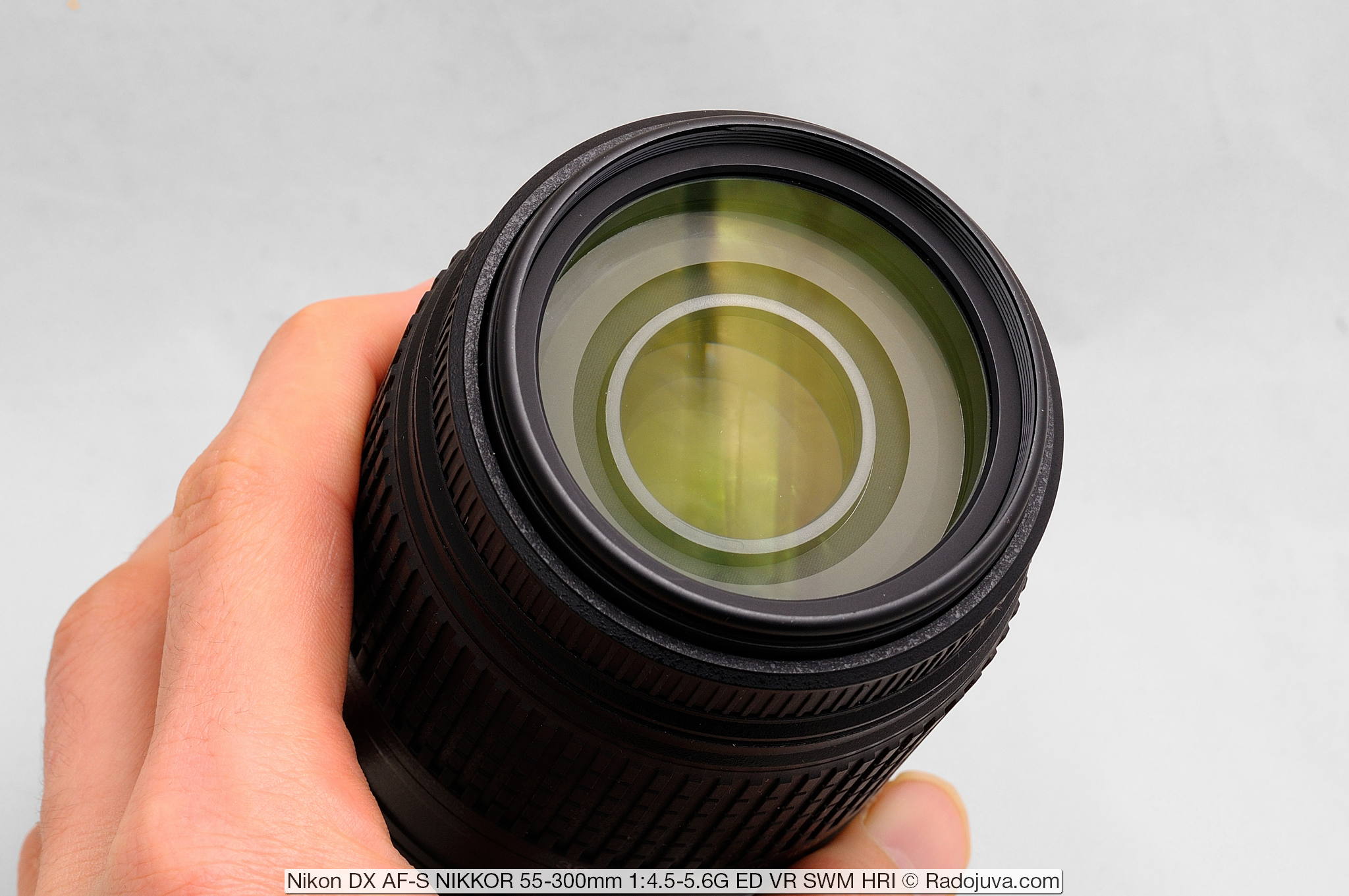
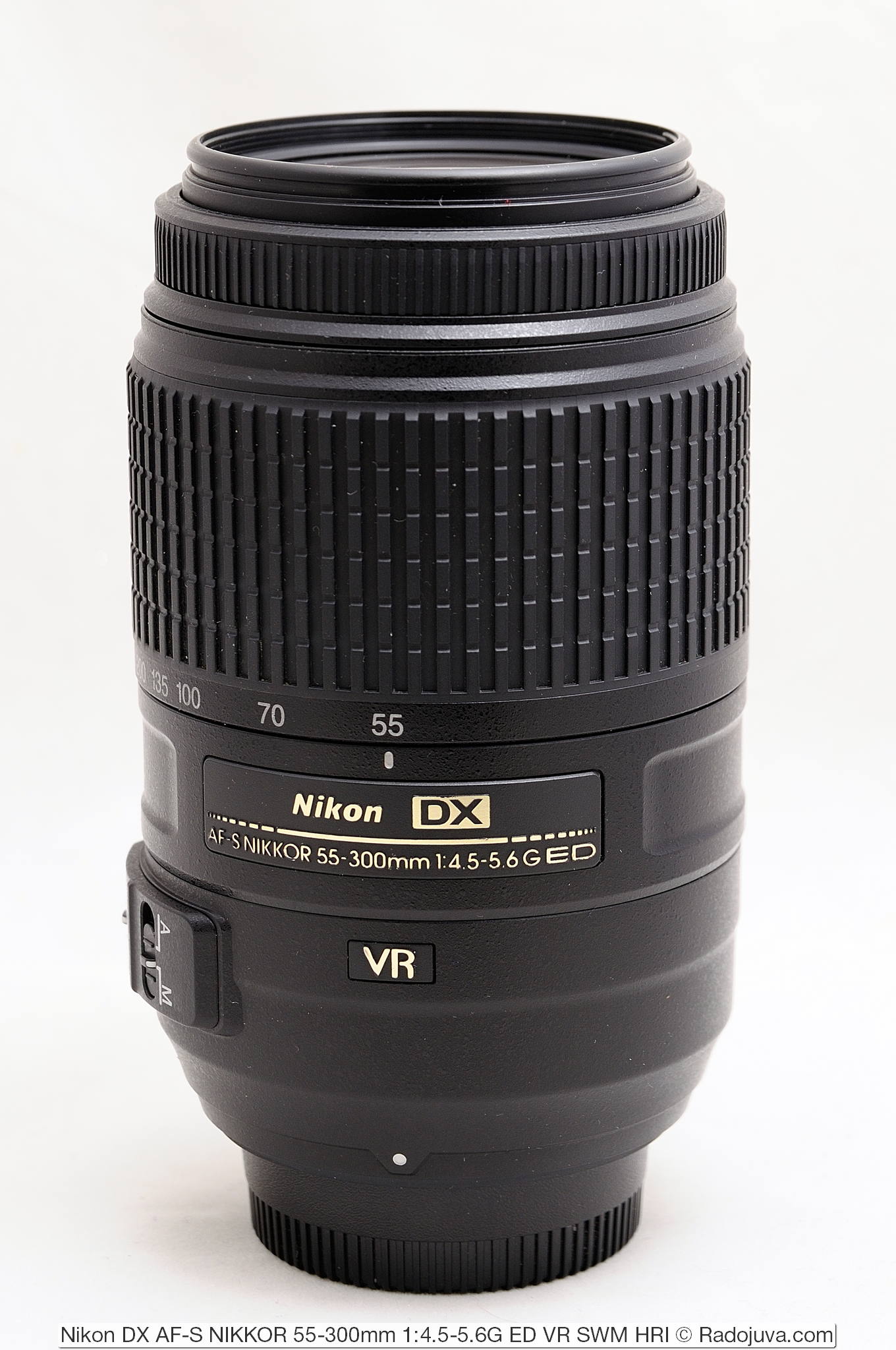
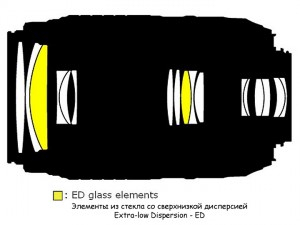
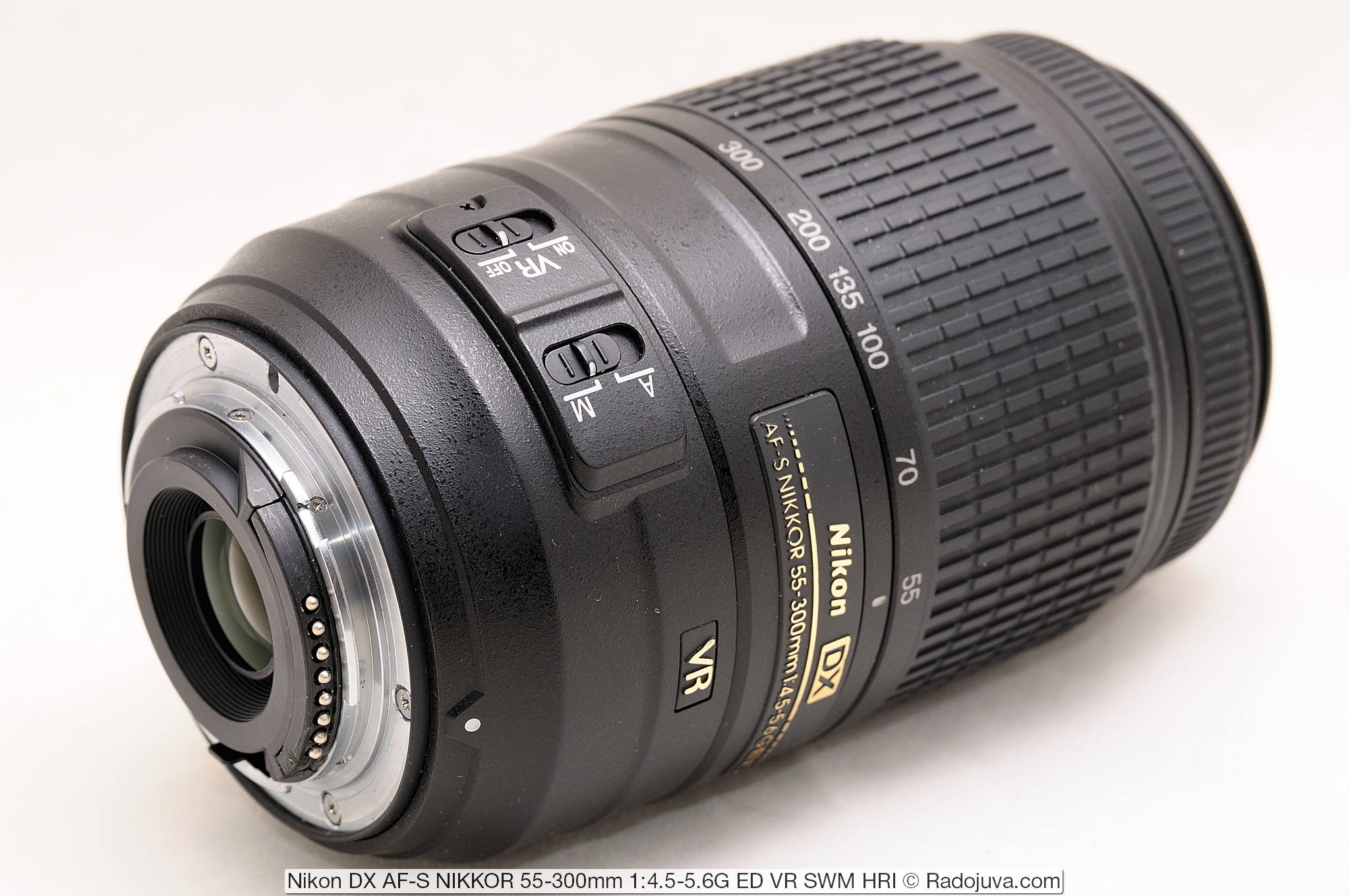
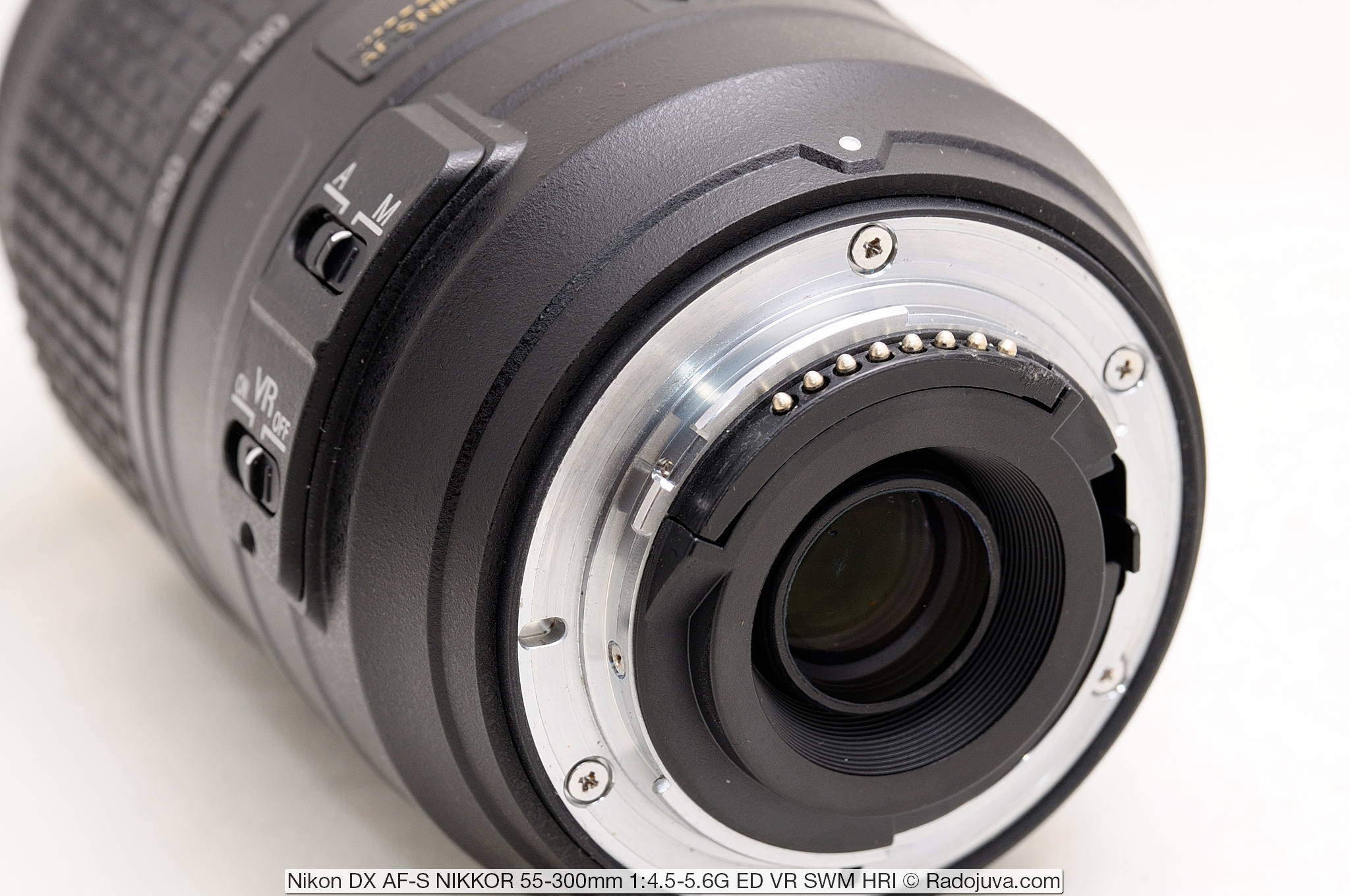
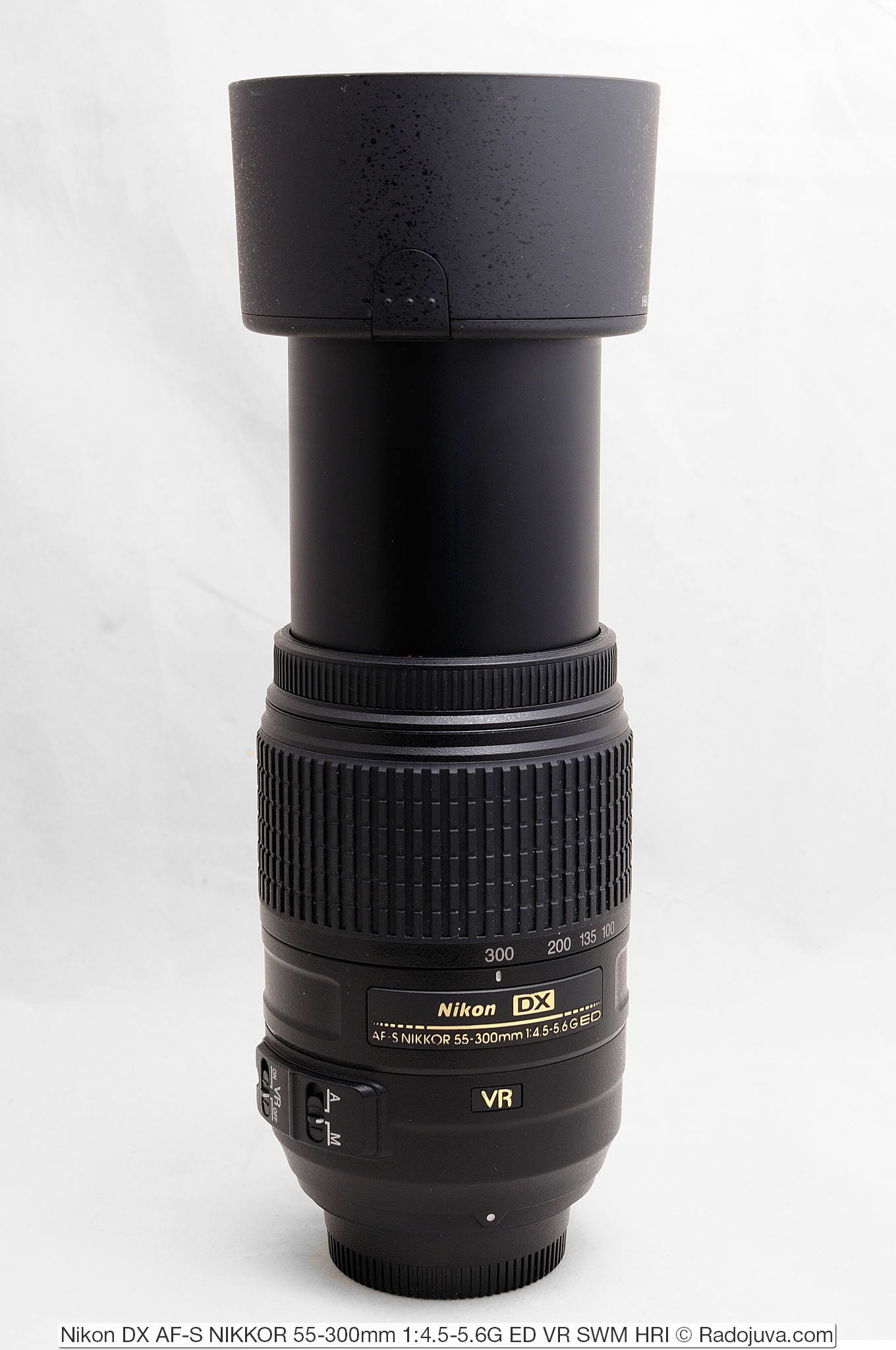
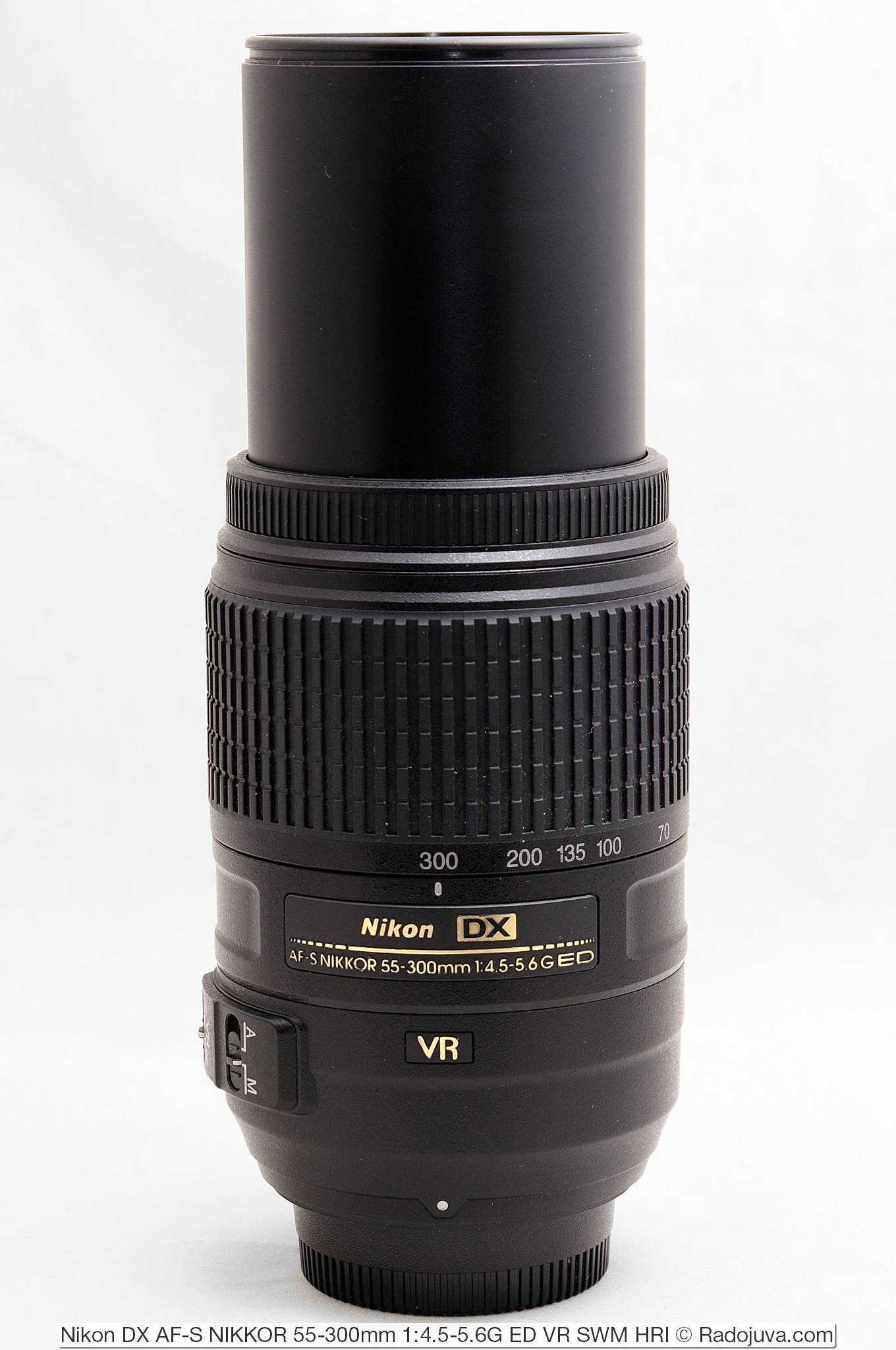















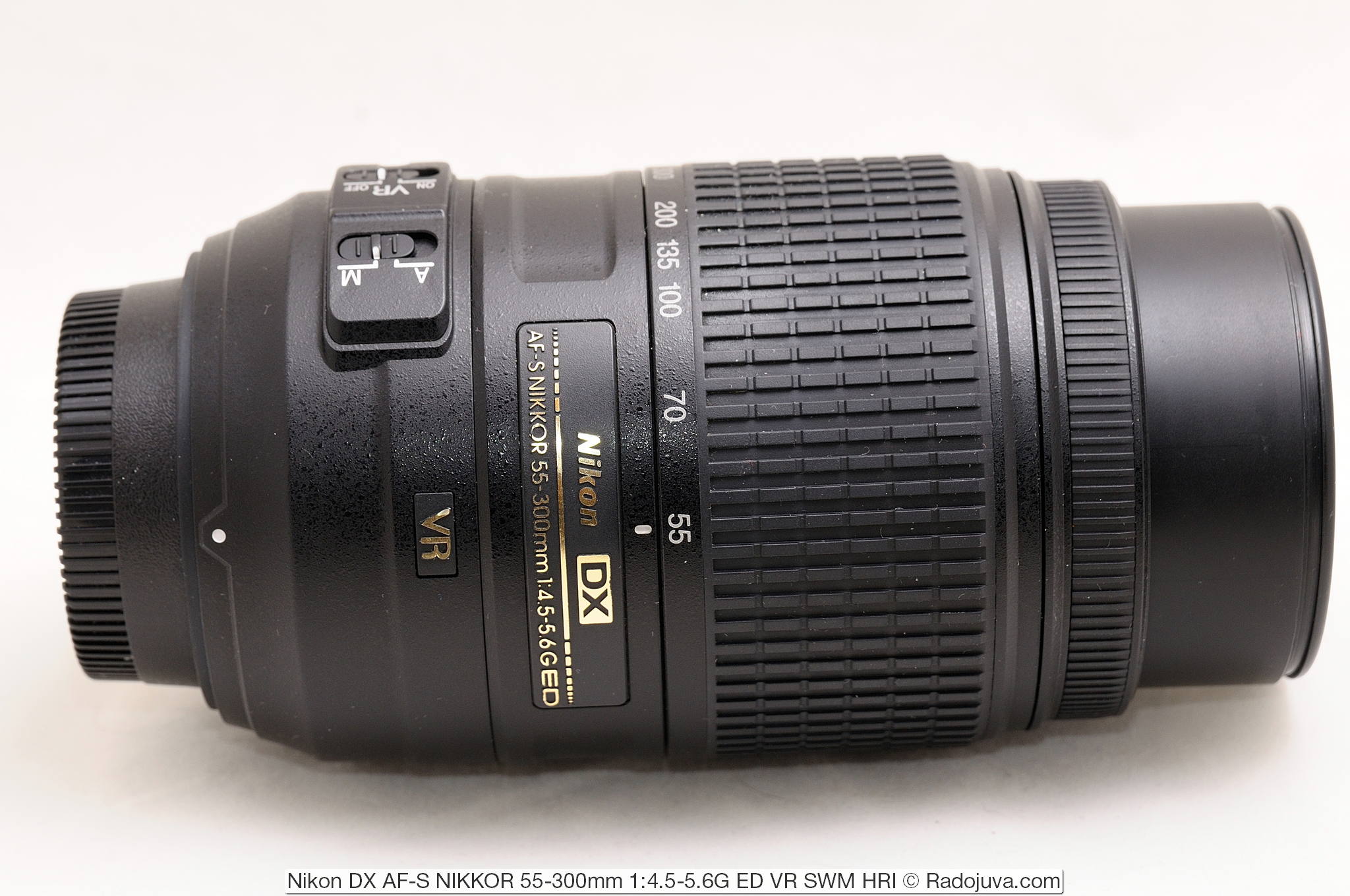
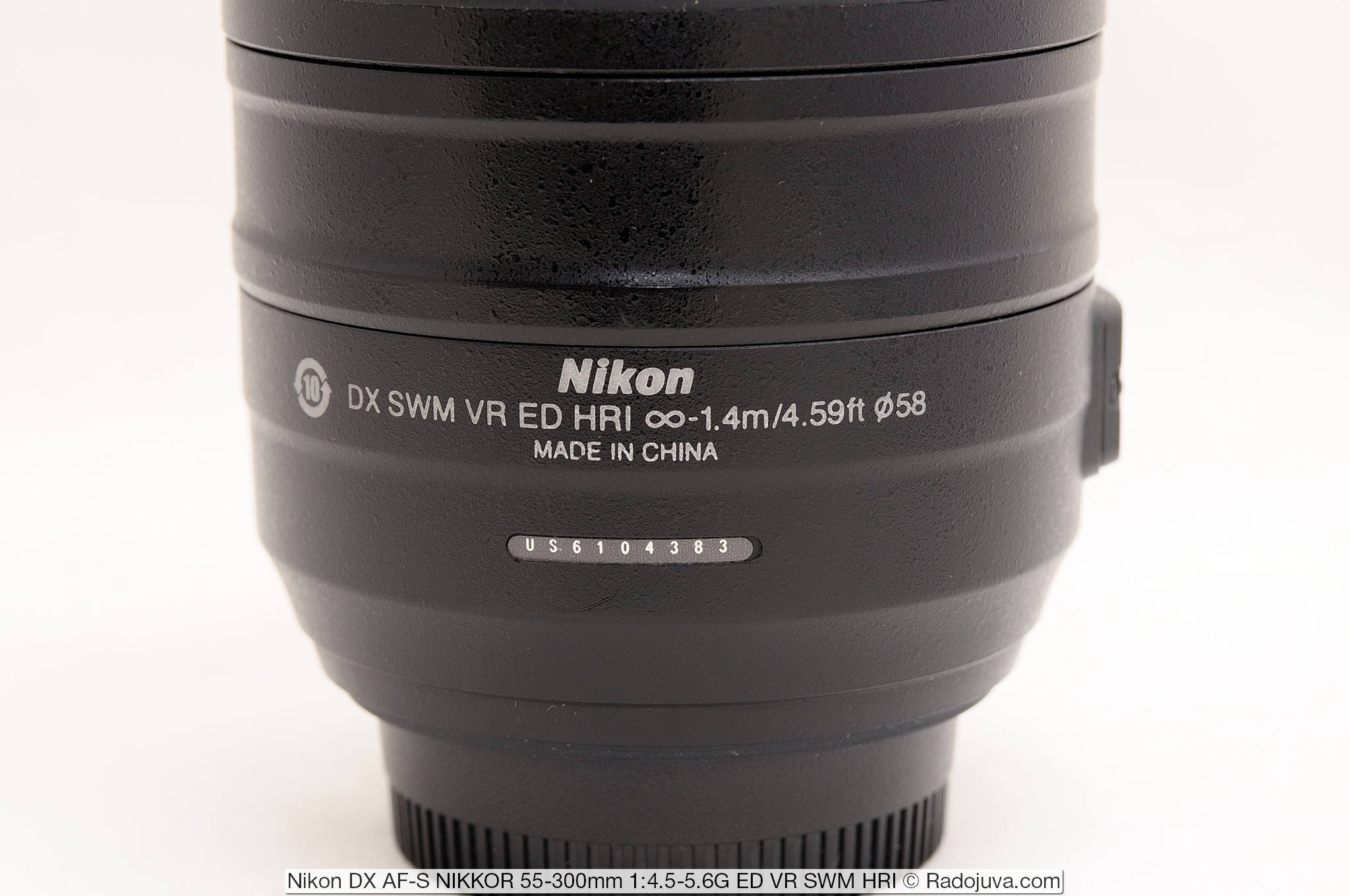
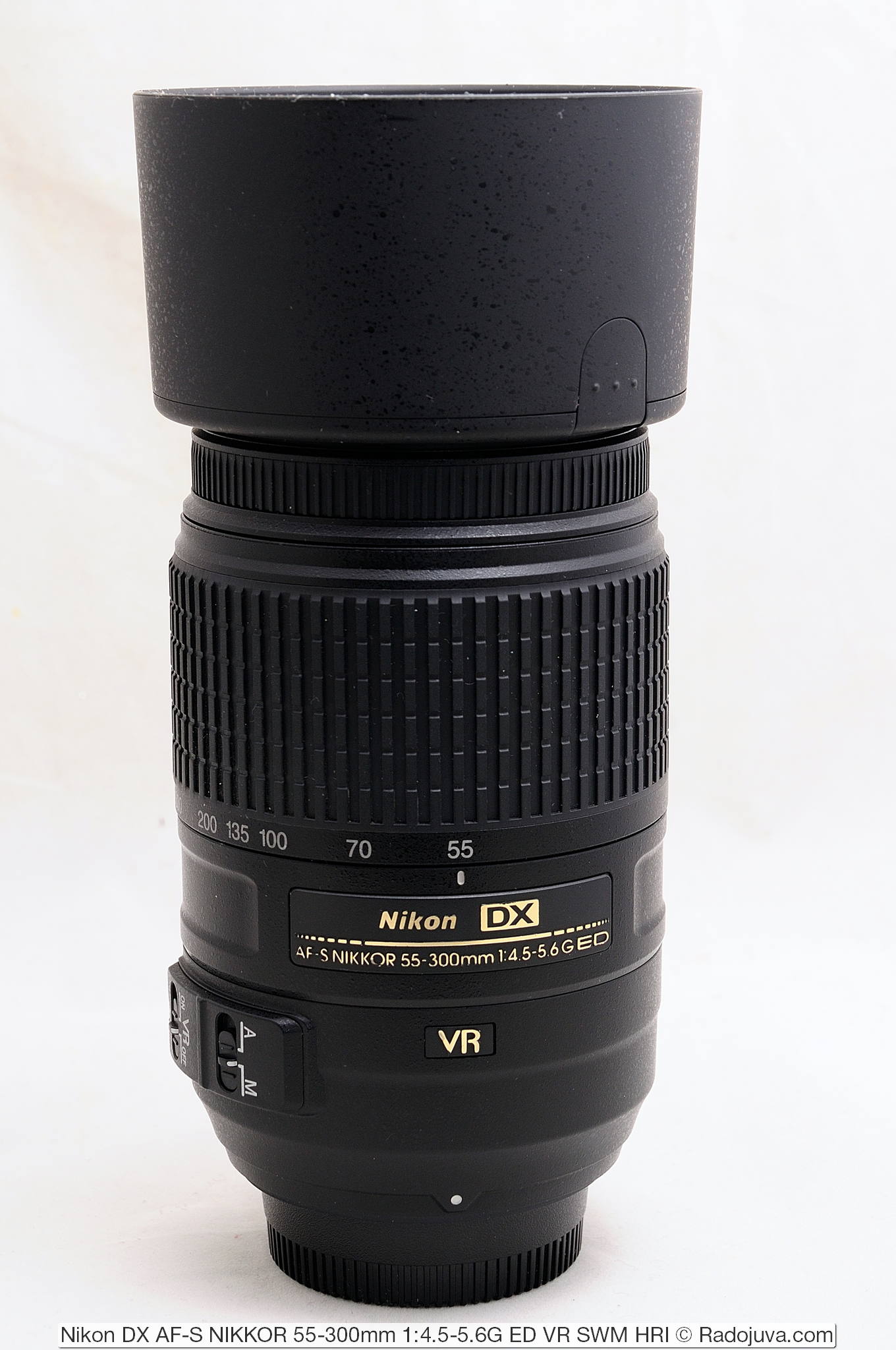
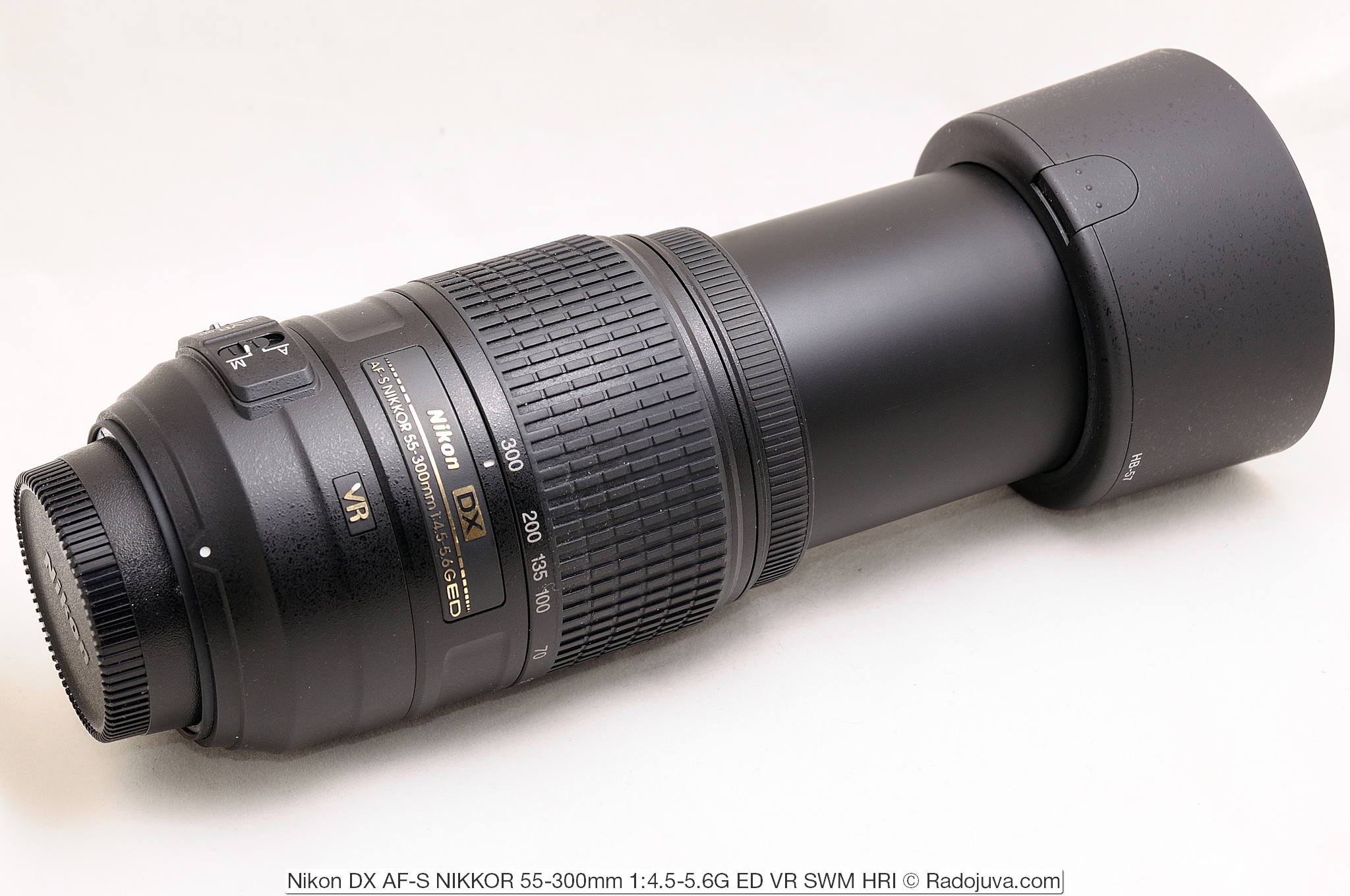
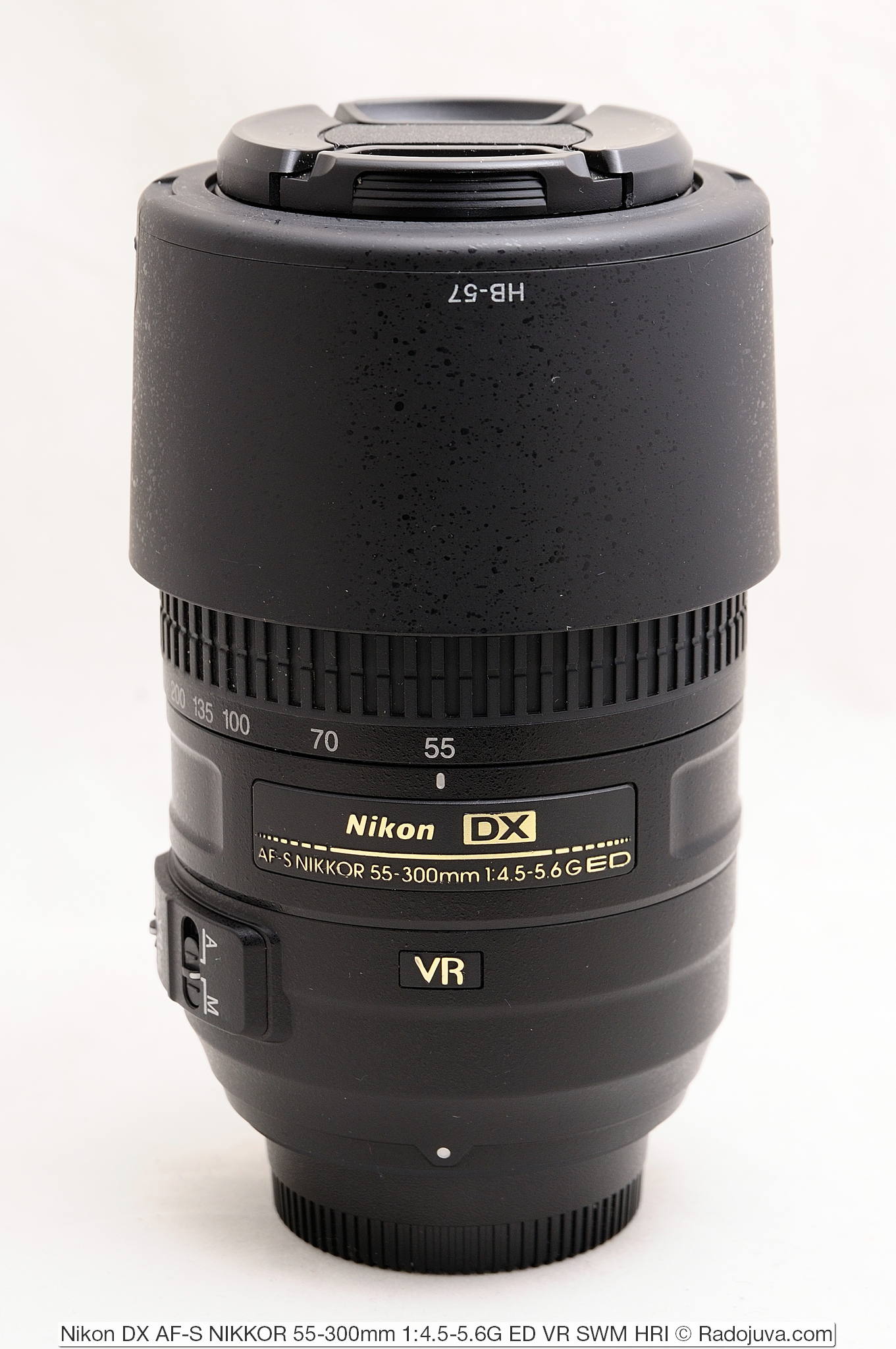
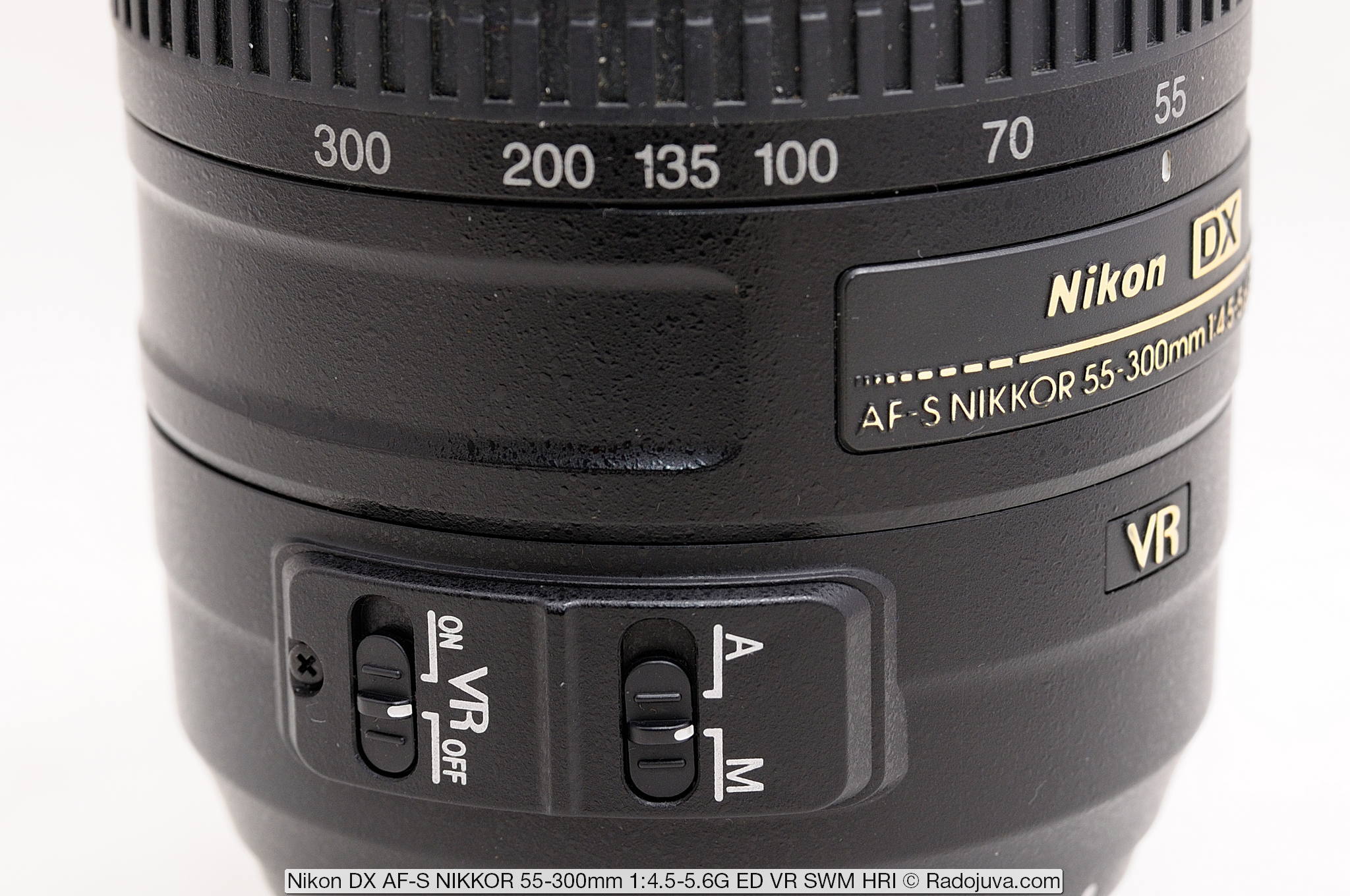

I have been doing photography since 1967. Sometimes it’s funny to become from what they write here. Guys, if you worked with telephoto lenses such as MTO-500 or MTO-1000 (Maksutov's telephoto lens 500 and 1000 mm focus) weighing several kilograms, without auto focus and other bells and whistles, and then show it in contrast and without grain, and so on and so on further - such a telephoto camera as 55-300, which you hate, will seem to you a divine gift of fate. All you something smears, slowly leads .... On a long focus, shoot at a shutter speed of at least 1/250 and an aperture of 13 or faster. Do not worry about the depth of field, it will remain quite small. For quick focusing, use manual control, it is quite quick. And the last - do not look for easy ways, learn to work with what is in your hands, study the theory of light painting, color and much more.
I got 300mm the best quality at f / 8. at f / 11 a sharp decrease is noticeable in the eye. same exposure, stab. ISO was in the region of 100-400, so only the diaphragm was important
Today I bought 55-300 new. I will now compare with 18-140 at 100 and 140mm. people must find out the truth!
good evening everyone. Here I compared a little 55-300 with 18-140, as well as, as a matter of curiosity, with the Fuji Finepix S5600 digital camera. pictures are not cropped, and at each the distance to the object is the same. the first photo is the hero of the Nikon 55-300mm section. center of sharpness, depth of field feeds quickly.
In this photo Nikon 14-140mm. the coverage angle turned out to be larger, the depth of field also came out more, but the details are not so clear, even in the center of the picture. the carcass is the same.
the last test is the Fuji Finepix S5600 digital dust collector, which is not bad, by the way. with aperture 8, everything is sharp, but the small letters in the center are not readable at all.
So here the 'equivalent aperture' should be somewhere in the region of f / 4.2-4.5
18-140 is much sharper, reduce to the total size (after focusing, if the size of the preset has changed, twist the zoom and focus again until the object occupies the entire frame after focusing, do not look at 135)
The other day I experimented with a close-up +3 filter at 300mm. no depth of field at all. the quality is so-so, although the photo has been processed to the maximum. to a ladybug about 22 centimeters.
If you want to shoot makruhu with such a filter, then do not get carried away by the long end.
FR over 150mm + macro lens => microscopic depth of field + crazy chromium aberrations + soapiness.
D5100, 70-300 / 4,5-5,6 with a stub, Marumi Macro Lens +3 diopters.
https://pp.vk.me/c625719/v625719890/57f22/G_cfvpNnwmo.jpg
https://pp.vk.me/c625719/v625719890/57f19/_hk8oHuvAtg.jpg
https://pp.vk.me/c625719/v625719890/57f10/eXQYQMyp_nw.jpg
https://pp.vk.me/c625719/v625719890/57f07/slIbcdhD-Xo.jpg
that is, I wanted to say close-up +4
In order not to breed a long body stock, let’s say this: close-up lenses are drek and bullshit, the maximum that can be used without significantly degrading the picture is +2 and then with a macro lens.
Of course, there are not very bad and very expensive close-apaches, but for this money you can already buy a full-fledged makrik.
Especially use with 55-300, what were you hoping for? For the National Geographic Award? No joke, of course.
Just one question, you write “although the photo is processed to the maximum”, what do you mean?
thank you all for the recommendations. Apparently it is so, that after 150mm the picture quality begins to drop sharply, and after 200mm and higher it is generally low. processed to the maximum - I tried to squeeze everything I could in Photoshop.
Yes, you are using it for other purposes. The lens is great.
After three years of jumping through forests and swamps, VR still died in it.
More precisely, out of the blue you are aiming somewhere - and then the picture jumps so thoroughly, by 15 percent, and even with a clang. You cut out VR - no jumps.
And, apparently, even with the VR turned off, the system randomly skews.
Once at a time - disconnected the lens, connected it, turned on / off VR - the sharpness is in place.
Another time I turned on the camera - soap. Autofocus works, aims, but lathers. I thought he was focusing in the wrong direction, he was shooting any picket fence running away into the distance - no, there are no clear lines at all.
Well, what can I say ... Three years for a plastic thing is still not bad. But I won't buy it a second time.
One Chukchi broke an alarm clock. He comes to the watch shop, where the receiver is also Chukchi. He opened the alarm clock and sees that a dead cockroach was stuck in the mechanism.
- Will not work.
- Why?
- The mechanic is dead!
His husband bought me a present. Recently I tested it in sports martial arts. I sat quietly on the podium and enjoyed. Guys, I don’t know, everything is fine. About focusing, I would not say that it’s long straight. I was let down only by the low burst speed on the Nikon D3200. In principle, the gym is not very bright, the lens in my opinion did an excellent job. Filmed in M, without a tripod naturally. The photos are normally clear, minimal RAW processing was required and the pictures are all clear.
Until the last moment I hated all sorts of stubs, considered them useless. The other day I clicked on my 55-300 using a stub. In principle, yes, it helps and how. The stability of this glass is good. The difference with him and without noticeable.
A week ago, I took such pictures with a stub. Both are slightly photographed and cropped. It was getting dark. People on the side of a mountain.
Wild little rabbits are about 20-25 meters long.
good colors. what kind of camera?
This is a Nikon D90.
I have had one for a long time already, I bought it in Thailand on the D40, now it is on the D300 - an excellent lens and at the same time very cheap. Of course, I didn't climb the forests and valleys with him, but he was in Italy and Germany and many other places and everything is fine
It has been 3 years since this review.
But in the comments there is still no agreement on autofocus.
Some people still claim that it is terribly slow and badly "clings" to the object.
Others, on the contrary - that flies and suffices almost on the fly.
No one figured out this controversial phenomenon?
Maybe there were really defective parties or different firmware?
The phenomenon here is this. With the onset of dusk, autofocus at 55-300 begins to fool around, and by the late evening it completely freezes. Here only manual focusing helps. Focusing speed is understandable not like in 16-85, however, for staged and similar shots, enough for the eyes and ears. In terms of marriage, Nikon will have a much better situation than, say, Sigma and Tamron, where every third glass either lathers or doesn’t make a fuss. A lot of people buy used glass and cameras, then they complain, it doesn’t work, it doesn’t work, everything’s supposed, the glass is bad. I, too, a couple of years ago on one used glass burned, although Nikon was, now I'm sitting and I'm not buzzing. Everything is just new.
HRI - is it really there? There is no such lens on Hotline and Google.
What kind of animal are you?
He focused on the ship, but it was necessary on the pedestrians on the left, then the ship and pedestrians would be in the DOF. In principle, I knew about it, but in a hurry I messed up. Taken from a tripod.
“But it was necessary on the pedestrians on the left, then the ship and the pedestrians would have got into the depth of field” - this is unlikely, look at the depth of field calculator, with a distance of 100 m to the object, the grip with such parameters is about 20 m, hyperfocal - almost 1 km.
The 55-300's problems with sharpness start on 24-megapixel dx-format matrices. I compared the operation of the same lens on the d5500 and on the d5100, on the latter everything is much better with sharpness, but there will be fewer megapixels, and the problem is not in focusing, autofocus on both cameras hits the target. On the d5500, after 240mm, nothing can make the picture sharp, on the d5100, closing the aperture to f8, I already get quite a decent result. Even on the d750 in dx mode at 300mm, you can get a very sharp picture, but again there will be fewer megapixels, it has 24 in a full frame. But the new af-p 70-300 f / 4.5-6.3 at 24-megapixel crop gives a sharper picture than the 55-300
Ready to meet. Donetsk region. Avdeevka city, Industrial zone.
When losing weight is practically impossible, no matter how much you strain yourself.
—
here it was possible to finish
Having seen enough tricky tables on Dxomark, singing diframbs about the sharpness of expensive glasses, I decided to check if my simple 55-300 is really bad. Maybe in fact such a soap gives out, and generally sucks. I took a Nikon D90, and went to the store. He asked the seller to test a pair of glasses that interest me. The seller did not refuse (so that he could live to be 100 years old). Even a tripod helpfully offered. On all three glasses, the aperture was twisted to f16, in order to detect diffraction. Added sharpness in Photoshop, nothing more. Clippings from the central part of the frame, approximately 750x450 pix in size. with the inclusion of small parts.
This is an example of a DX55-300. In a hurry, put 220mm.
Now 70-200 f4, rabbit cradle. Autofocus worked quickly and silently. Glass and carcass balanced well, I think the foot is not particularly needed.
The last one is the real Japanese 80-400D ED. An autofocus screwdriver worked with a buzz, however acceptable, the speed is on par with the D55-300. A foot is desirable but not required.
In general, after today's trip to the store and viewing the test results, I fell in love with my 55-300 even more than before. Although of course after 240mm it really lathers.
As for the stop, they didn’t pinch the aperture))) The resolution would fall even more and the difference between any lenses would become invisible
Yes, I laughed. Well, nothing, now I know that there’s a “Clever Man” whose name is Mikhail, I’ll ask him the next time.
A stupid thing is not a tricky one. Do not mislead people with your "tests" and "conclusions" about comparable optical characteristics of the above lenses
joke
a man in working clothes enters a store where computers are sold. the consultant approaches, asks what interests him. man asks to show the coolest comp. they show him. he hits the computer with a crowbar, the computer crashes. man smirks: this is your computer nonsense against our scrap!
Troll you. Deserved) just take it for granted. Testing further) it’s one thing to breed a theory, like your opponents), and it’s quite another to do something, and show how you do it. Sincerely.
And why clamp the diaphragm then? To level out the differences? This will make almost all lenses look the same. It is not for nothing that Arkady takes more pictures outdoors - problems are visible. And diffraction is more dependent on the size of the pixels (i.e. the camera). At 16, even the worst lens will be little distinguishable from the excellent. So your test is never a test.
Not even more, but only on the size of the pixel, because the lens does not affect the diffraction threshold in any way
Mistake. Diffraction occurs just in the lens at the diaphragm, and we see it on the matrix. It also depends on lenses, but if we consider the same type, it will be basically the same due to their size and design.
I agree. Only the design affects the degradation of the image rather than the diffraction threshold. Some kind of exotic is possible, of course, but as far as the case of the ordinary DSLR is concerned, it’s difficult for me to name not the same type of lenses and apertures, except for diagrams completely devoid of aperture.
Even when your optical system has reached the diffraction limit or even exceeded it, other factors, such as focusing accuracy, motion blur (movement) and imperfect lenses can have a much greater impact. Diffraction blurring becomes a limiting factor for overall sharpness only when using a stable tripod, raising the mirror and high-quality lens
http://www.cambridgeincolour.com/ru/tutorials-ru/diffraction-photography.htm
The tripod was there anyway, and a high-quality lens is not required. Any more or less modern lens is enough for diffraction to become the limiting factor. With such a clamped diaphragm, the entire line can be compared - there will be no differences, because a resolution of 6-8 megapixels will handle almost any lens released in this century.
Let me insert my 5 cents on the issue of sharpness of the lens. He first stood on the Nikon d3100. At 300 mm I never shot because there was no sharpness, 280 maximum. I swore at the lens, but fortunately, I did not change it, but the camera on the d7000. And, lo and behold, sharpness appeared! The lens is very good at its price.
Didn’t get into focus or something at 3100?
I have the same story. Two lenses were available 18-105 and 55-300 and a d5100 carcass. I didn’t especially see the sharpness, but attributed everything to budget glasses. I changed the d7100 carcass and lo and behold, sharpness appeared on both. Previously, 55-300 almost did not catch. And now he began to use it often. And 18-105 generally became sharp.
No consent in comments. One author claims that at d5100 it is sharp, at 24MP it does not resolve, soapy, another, the previous one - at 5100 it is not sharp, at 7100 it became sharp. I have equally good sharpness at 5100 and on earlier crops, incl. by 300mm. Not worse than 200mm on 55-200VR.
The lens flickered on the first camera - did not impress, put it off. We gained experience with other glasses, and then we changed the carcass. They put on a new carcass a forgotten glass, and lo and behold - the lens is not bad.
maybe focus smeared. I did not notice the difference at 5100 and 7100
In this article, Arkady considers this zoom to be unsuccessful, and in the article on ED lenses, he recommends a good zoom of average optical performance as above. A contradiction however!
Optically good, generally unsuccessful.
I think if optics is good, then it’s generally good :-)) Thank you for a great site!